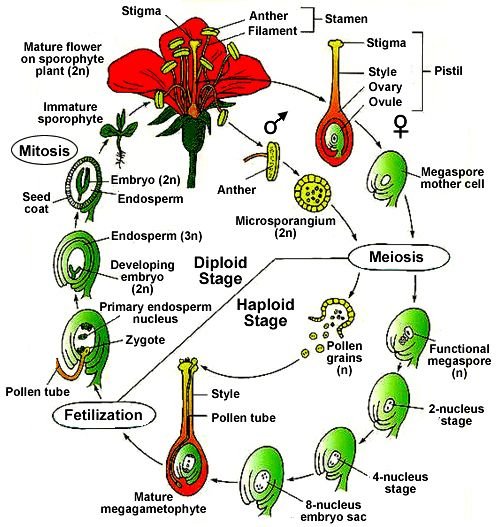Mobility and Its Relation with Electric Current
Understanding electron mobility in conductors and semiconductors
Introduction to Electron Mobility
When we study the behavior of electrons in conductors and semiconductors, one of the key parameters we encounter is electron mobility. This fundamental property plays a crucial role in determining how efficiently electric current flows through materials, and is essential for designing and understanding electronic devices from simple resistors to complex integrated circuits.
Definition of Mobility
Electron mobility (μ) is defined as the measure of how quickly an electron can move through a metal or semiconductor when pulled by an electric field. Mathematically, it is the ratio of the drift velocity to the applied electric field:
\[ \mu = \frac{v_d}{E} \]
Where:
- \( \mu \) = mobility of charge carriers (usually in \(m^2/(V \cdot s)\))
- \( v_d \) = drift velocity (in \(m/s\))
- \( E \) = electric field strength (in \(V/m\))
Mathematical Formulation
To understand mobility fully, we need to examine its mathematical foundations and its derivation from the fundamental principles of electron behavior in materials.
Drift Velocity and Electric Field
When an electric field is applied to a conductor, free electrons experience a force that accelerates them. However, these electrons also collide with the atoms in the lattice structure of the material, resulting in a constant average velocity called the drift velocity.
The force experienced by an electron in an electric field is:
\[ F = -eE \]
Where \(e\) is the elementary charge (\(1.602 \times 10^{-19}\) C).
Between collisions, electrons accelerate according to Newton’s second law:
\[ a = \frac{F}{m} = \frac{-eE}{m_e} \]
Where \(m_e\) is the electron mass (\(9.11 \times 10^{-31}\) kg).
If we denote the average time between collisions as \(\tau\) (the relaxation time or mean free time), the average drift velocity becomes:
\[ v_d = -\frac{eE\tau}{m_e} \]
Comparing with the definition of mobility, we get:
\[ \mu = \frac{v_d}{E} = \frac{e\tau}{m_e} \]
This relation shows that mobility depends on:
- The elementary charge (a constant)
- The relaxation time between collisions (material-dependent)
- The electron mass (a constant)
Relationship with Electric Current
The concept of mobility is directly linked to electric current. To understand this relationship, we need to examine the current density equation.
Current density (\(J\)) is related to the number of charge carriers \(n\), their charge \(e\), and drift velocity \(v_d\):
\[ J = nev_d \]
Substituting the expression for drift velocity in terms of mobility:
\[ v_d = \mu E \]
We get:
\[ J = ne\mu E \]
This can be related to conductivity (\(\sigma\)):
\[ \sigma = ne\mu \]
And since \(J = \sigma E\), we establish the direct relationship between mobility and conductivity.
Key Insight
This relationship reveals that the mobility of charge carriers directly affects how well a material conducts electricity. Higher mobility leads to higher conductivity for the same carrier concentration.
Factors Affecting Mobility
Several factors influence electron mobility in materials:
1. Temperature Dependence
As temperature increases, the thermal vibration of atoms in the lattice (phonons) increases, leading to more electron-phonon scattering events. This results in a shorter relaxation time \(\tau\) and thus lower mobility.
For metals, mobility typically follows a relationship of:
\[ \mu \propto T^{-3/2} \]
For semiconductors, the relationship can be more complex but often follows:
\[ \mu \propto T^{-n} \]
where \(n\) ranges from 1 to 2.5 depending on the dominant scattering mechanism.
2. Impurity Concentration
In semiconductors, doping introduces impurity atoms that can scatter electrons. Higher impurity concentration leads to more scattering events and lower mobility.
3. Crystal Structure and Defects
Lattice defects, grain boundaries, and dislocations all serve as scattering centers for electrons, reducing mobility.
4. Electric Field Strength
At high electric fields, mobility can become field-dependent due to hot-electron effects, particularly in semiconductors.
| Material | Typical Mobility (m²/V·s) | Temperature Dependence | Main Limiting Factor |
|---|---|---|---|
| Copper | 0.0030 | \( \propto T^{-3/2} \) | Phonon scattering |
| Silicon | 0.1400 | \( \propto T^{-2.5} \) | Phonon and impurity scattering |
| Germanium | 0.3800 | \( \propto T^{-1.7} \) | Phonon and impurity scattering |
| Gallium Arsenide | 0.8500 | \( \propto T^{-1} \) | Inter-valley scattering |
| Graphene | 2.0000 | Complex | Substrate interactions |
Practical Applications
Understanding mobility is crucial for many practical applications in electronics and materials science:
1. Semiconductor Device Design
High mobility materials are preferred for transistors to achieve faster switching speeds and lower power consumption. This is why materials like gallium arsenide or graphene are investigated as alternatives to silicon for high-performance devices.
2. Solar Cell Efficiency
Higher carrier mobility leads to better charge collection and thus higher efficiency in photovoltaic cells.
3. Thermoelectric Materials
The efficiency of thermoelectric materials depends on the mobility of charge carriers. Higher mobility can lead to better electrical conductivity without necessarily increasing thermal conductivity.
4. Hall Effect Sensors
The Hall effect, which is used in magnetic field sensors, depends directly on carrier mobility. Higher mobility materials exhibit a stronger Hall effect for the same magnetic field.
Industry Application
In the semiconductor industry, engineers carefully control doping levels and processing temperatures to optimize mobility for specific applications. For example, power devices might prioritize different mobility characteristics compared to high-frequency RF devices.
Numerical Examples
Example 1: Calculating Drift Velocity from Mobility
Problem: An electron in silicon has a mobility of 0.14 m²/V·s. Calculate the drift velocity when an electric field of 100 V/m is applied.
Solution:
Using the definition of mobility:
\[ v_d = \mu E \]
\[ v_d = 0.14 \text{ m²/V·s} \times 100 \text{ V/m} \]
\[ v_d = 14 \text{ m/s} \]
Conclusion: The electrons will drift with an average velocity of 14 m/s in the direction opposite to the electric field.
Example 2: Finding Current Density
Problem: A copper wire has an electron concentration of 8.5 × 10²⁸ electrons/m³ and the mobility of electrons is 0.0030 m²/V·s. Calculate the current density when an electric field of 0.5 V/m is applied.
Solution:
We use the formula for current density:
\[ J = ne\mu E \]
\[ J = 8.5 \times 10^{28} \text{ m}^{-3} \times 1.602 \times 10^{-19} \text{ C} \times 0.0030 \text{ m²/V·s} \times 0.5 \text{ V/m} \]
\[ J = 8.5 \times 10^{28} \times 1.602 \times 10^{-19} \times 0.0030 \times 0.5 \]
\[ J = 2.04 \times 10^7 \text{ A/m²} \]
Conclusion: The current density in the copper wire is 2.04 × 10⁷ A/m².
Example 3: Relaxation Time Calculation
Problem: The mobility of electrons in a semiconductor is 0.36 m²/V·s. Calculate the relaxation time between collisions.
Solution:
From the relation between mobility and relaxation time:
\[ \mu = \frac{e\tau}{m_e} \]
Rearranging to find \(\tau\):
\[ \tau = \frac{\mu m_e}{e} \]
\[ \tau = \frac{0.36 \text{ m²/V·s} \times 9.11 \times 10^{-31} \text{ kg}}{1.602 \times 10^{-19} \text{ C}} \]
\[ \tau = \frac{0.36 \times 9.11 \times 10^{-31}}{1.602 \times 10^{-19}} \]
\[ \tau = 2.05 \times 10^{-13} \text{ s} = 0.205 \text{ ps} \]
Conclusion: The average time between collisions for electrons in this semiconductor is approximately 0.205 picoseconds.
Example 4: Temperature Effect on Mobility
Problem: At 300 K, the mobility of electrons in silicon is 0.14 m²/V·s. Estimate the mobility at 400 K, knowing that for silicon \(\mu \propto T^{-2.5}\).
Solution:
Since \(\mu \propto T^{-2.5}\), we can write:
\[ \frac{\mu_2}{\mu_1} = \left(\frac{T_1}{T_2}\right)^{2.5} \]
\[ \mu_2 = \mu_1 \left(\frac{T_1}{T_2}\right)^{2.5} \]
\[ \mu_2 = 0.14 \text{ m²/V·s} \times \left(\frac{300 \text{ K}}{400 \text{ K}}\right)^{2.5} \]
\[ \mu_2 = 0.14 \times \left(\frac{3}{4}\right)^{2.5} \]
\[ \mu_2 = 0.14 \times 0.65 = 0.091 \text{ m²/V·s} \]
Conclusion: The mobility at 400 K decreases to 0.091 m²/V·s, showing how temperature significantly affects carrier mobility in semiconductors.
Conclusion
Electron mobility is a cornerstone concept in solid-state physics and electrical engineering. It provides a quantitative measure of how easily charge carriers move through a material in response to an electric field. The relationship between mobility and electric current is fundamental to understanding and designing electronic devices.
The key points to remember are:
- Mobility relates drift velocity to the applied electric field
- It directly affects conductivity through the relation \(\sigma = ne\mu\)
- It depends on material properties, temperature, and impurity concentration
- Higher mobility generally leads to better electrical performance in devices
Understanding mobility and its relationship with electric current enables us to design more efficient electronic components, from simple resistors to complex integrated circuits, and helps us develop new materials with tailored electronic properties for specific applications.
Next Topics in Current Electricity
- Ohm’s Law
- V-I Characteristics (Linear and Non-linear)
- Electrical Energy and Power
- Electrical Resistivity and Conductivity



